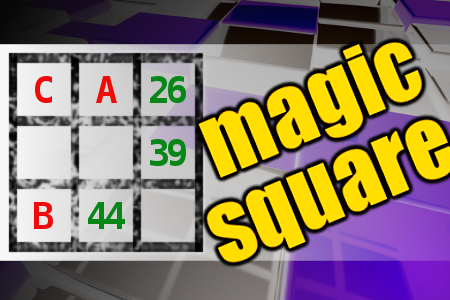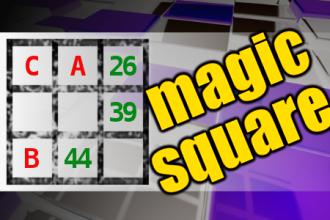MAGIC SQUARE: Calculate A*B-C
The aim is to place the some numbers from the list (21, 22, 24, 25, 26, 27, 39, 42, 44, 48, 51) into the empty squares and squares marked with A, B an C. Sum of each row and column should be equal. All the numbers of the magic square must be different. Find values for A, B, and C. Solution is A*B-C.Correct answers: 1
#brainteasers #math #magicsquare

Old Mrs. Pierpoint
Worried that they hadn't heard anything for days from the widow in the apartment next door, the mother said to her son, "Tony, would you go next door and see how old Mrs. Pierpoint is?"
A few minutes later, Tony returned.
"Well, is she all right?" asked the mother.
"She's fine, but she's rather annoyed with you," remarked Tony.
"At me?" the mother exclaimed. "Whatever for?"
Tony replied, "Mrs. Pierpoint said it's none of your business how old she is."

